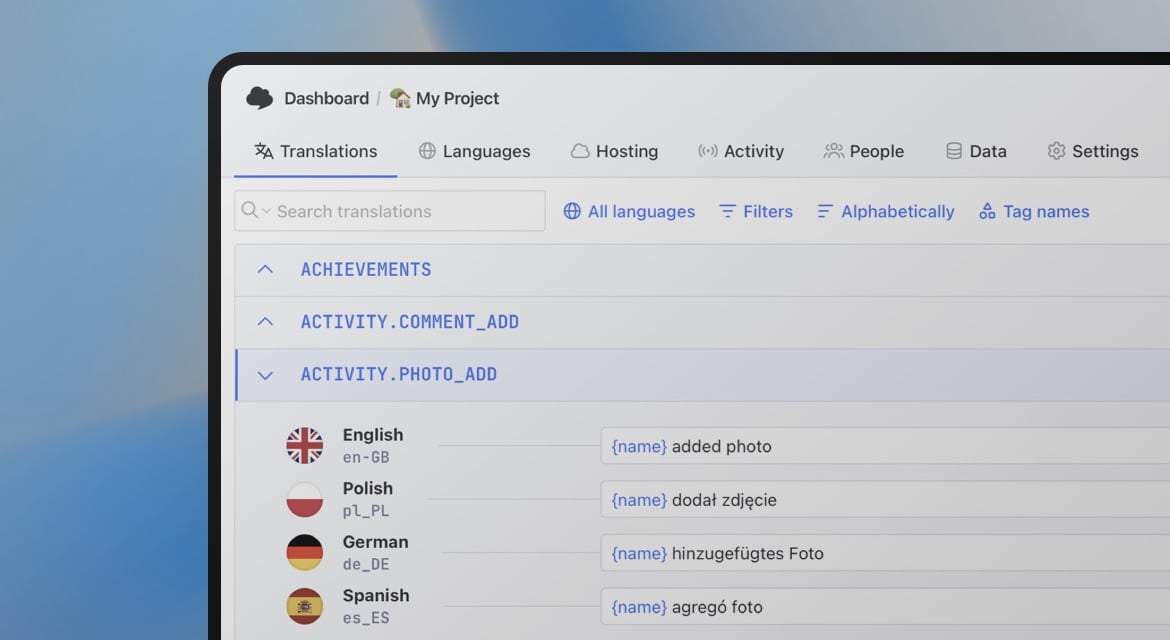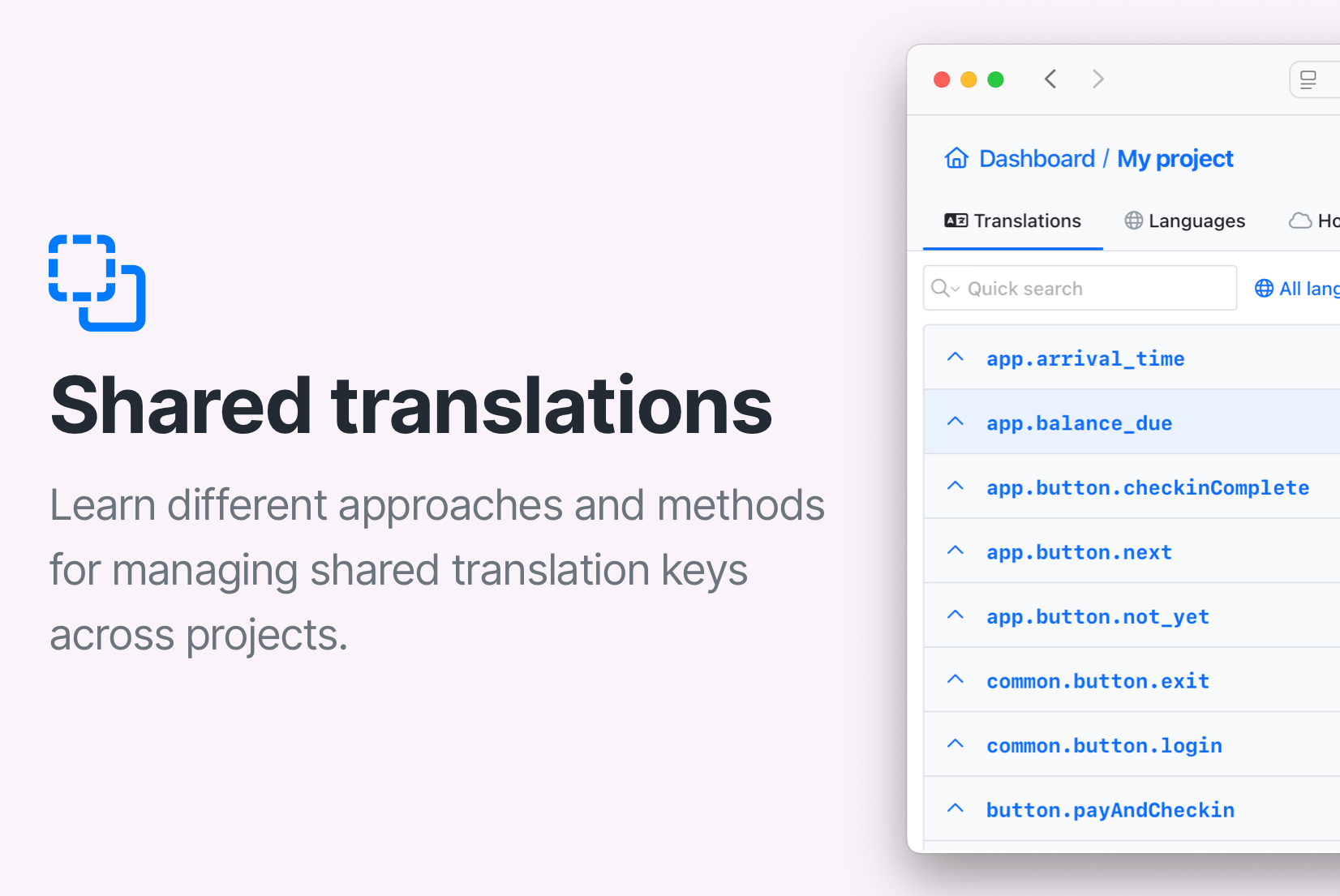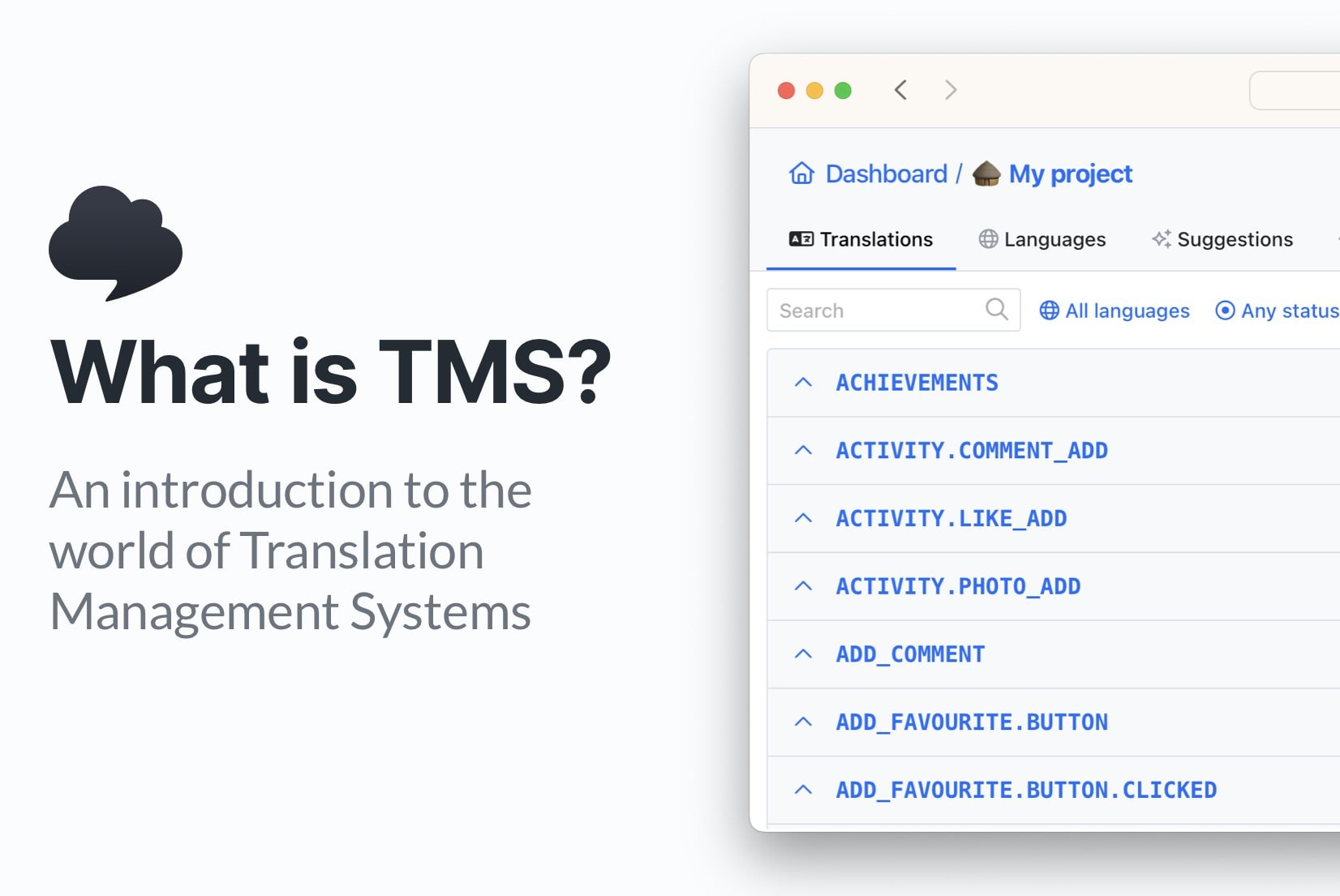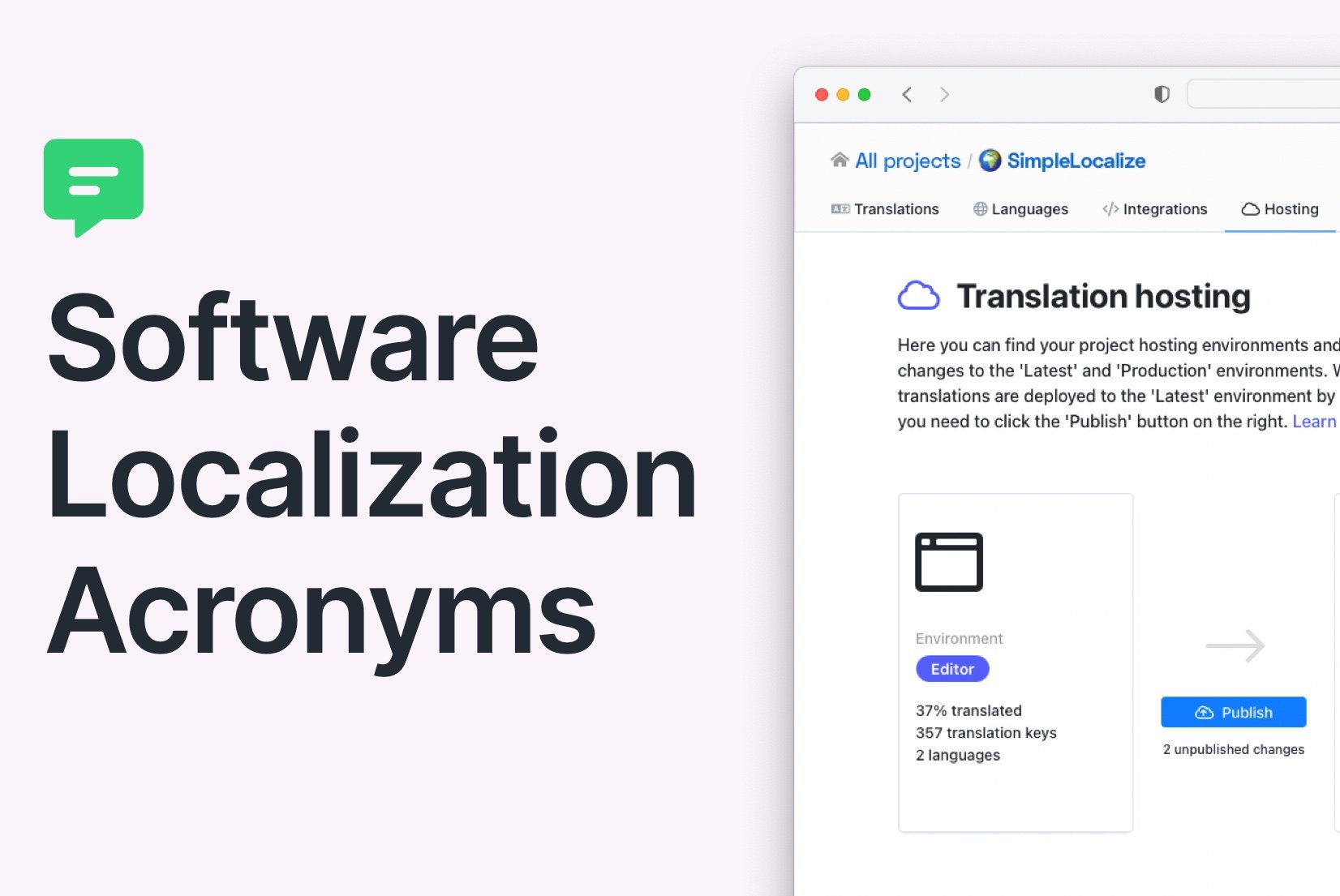Why translation matters in modern software projects
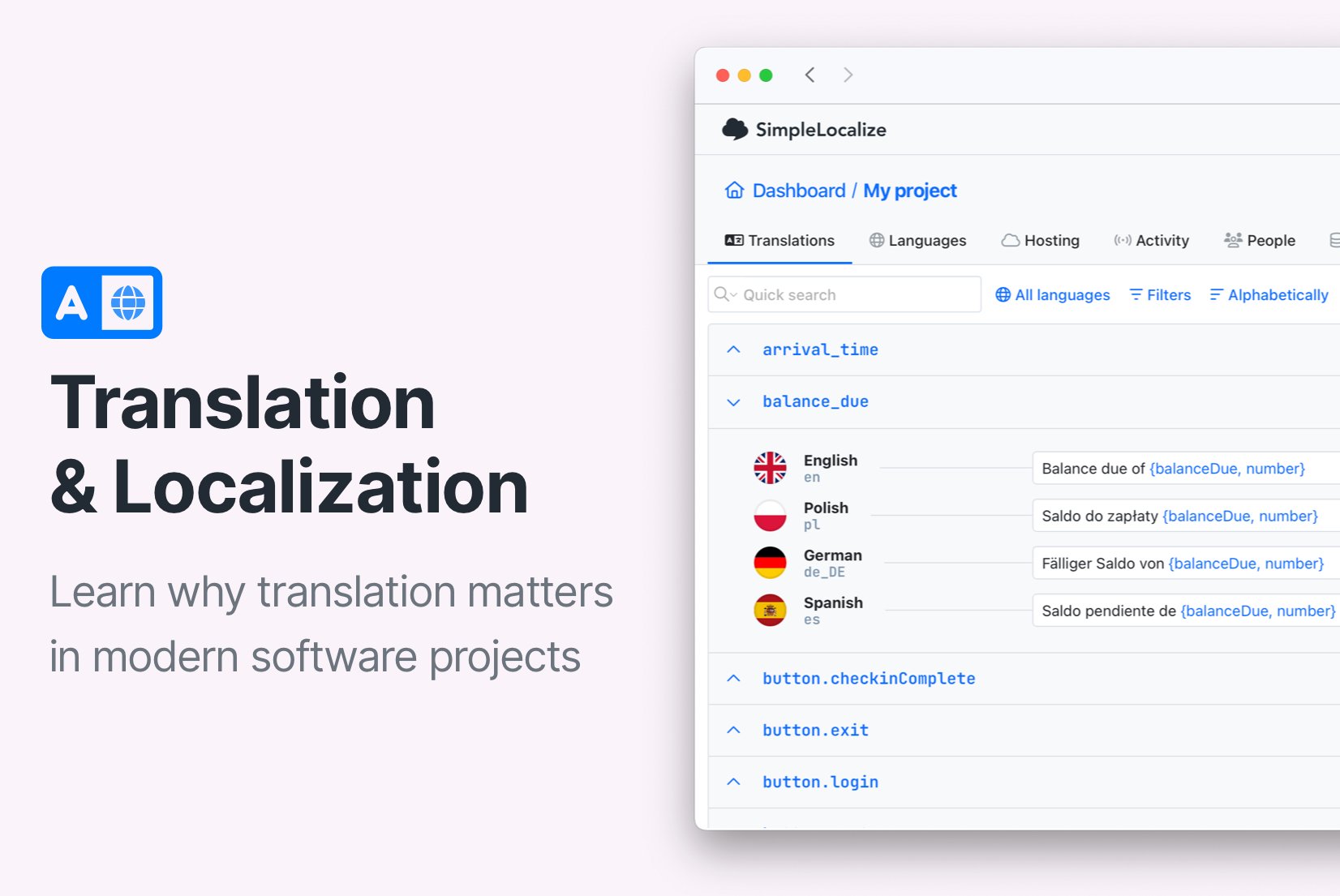
What if your app couldn't speak your user's language? Imagine trying to navigate settings, fill out forms, or get support — all in a language you don't understand. That's what poor or missing translation feels like in software projects.
In a world where software is global from day one, translation isn't a “nice to have.” It's a fundamental part of product design, user experience, and customer retention.
What is translation (in a software context)?
Translation is a very beginning of the localization process. It is the first step to make your software accessible to users who speak different languages. But it is more than converting words, it's about conveying meaning in context. In software, that includes:
- UI elements (buttons, menus)
- Onboarding screens and help tips
- Notifications and error messages
- Support content and chatbot replies
Bad translations confuse users and erode trust. Good ones feel native, like the software was made just for them.
Translation vs Localization: What's the difference?
Let's clarify two often-mixed terms:
- Translation is converting text from one language to another.
- Localization adapts content to local culture, language variation, and user expectations.
📌 Example: A "Checkout" button might be translated directly in Japanese, but localized wording could change entirely to match cultural norms.
Localization also includes:
- Formatting (dates, currencies, units)
- Tone and formality
- Cultural references and idioms
- Legal and regulatory adjustments
Why translation matters in software projects
Translation and localization impact far more than language: they influence how users feel, act, and engage. Here is why it is essential:
- Global reach: Make your app accessible to non-English-speaking users.
- Improved UX: Clear, native-feeling content reduces user friction.
- Better conversions: Localized interfaces increase trust and engagement.
- Clarity in complex domains: Accurate language in technical or sensitive content prevents misunderstandings.
- Legal and compliance: Ensure accuracy in privacy policies, terms, and disclosures.

Common pitfalls in software translation
Avoid these mistakes if you want your translations to succeed:
- ❌ Relying solely on machine translation
- ❌ Hard-coding text strings into your code
- ❌ Failing to provide translators with context
- ❌ Ignoring regional language differences (e.g., Brazilian vs European Portuguese)
- ❌ Skipping translation QA with native speakers
Best practices for localization in software development
Here is how to build global-ready software:
- Internationalize your codebase: Separate content from code and use i18n libraries.
- Use a translation management system (TMS): Tools like SimpleLocalize help manage, organize, and automate translations efficiently.
- Provide context: Use screenshots, descriptions, and keys that help translators understand usage.
- Collaborate with native speakers: Involve them in testing and QA.
- Automate where possible: Integrate localization into your CI/CD pipeline.

The human side of translation
Even with today's AI-powered tools, human translators are irreplaceable for understanding cultural nuance, creating natural, idiomatic phrasing, or navigating ambiguous or technical content. They bring empathy and creativity that machines can't replicate.
A well-localized product should not feel like a translation. It should feel like it was written just for that user.

Conclusion
Translation in software is not just about accessibility, it is about creating meaningful, trusted, and enjoyable experiences for users around the world.
When done right, translation and localization remove barriers. They open up markets, empower users, and help software become truly global. And as powerful as automated tools are today, it is still humans who ensure that our digital experiences feel human too.
Using a platform like SimpleLocalize can help your team translate faster, localize better, and build products that truly resonate across languages and cultures. Register for free and start your localization journey today!
